Building your animation studio is expensive. When shopping for things for a studio, you need computers, software, monitors, and other equipment that can cost you tens of thousands of dollars. Even the software you've invested in leaves quite a massive hole in your wallet! But what about the things for a studio that you don’t think about when starting up?
There are some things for a studio that most animators forget to buy at first but which will become essential once you start working every day in your new professional space. In this blog, we'll cover the ten things every animator should have in their studio:
10 Things For a Studio Every Animator and Studio Owner Forgets
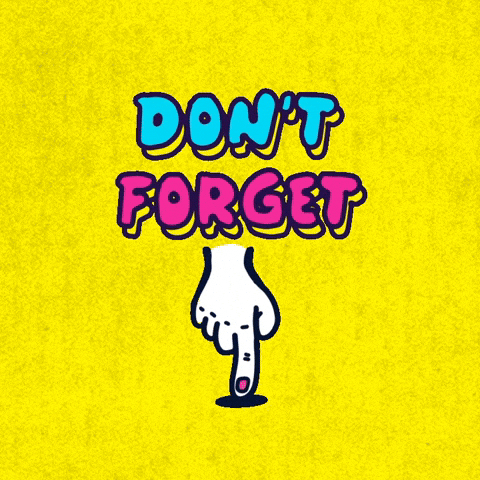
GIF by olle.jerki via GIPHY
1. Room Dividers or Animation Cubicles
You need to make sure you have enough space for the things in your studio, like all of the equipment and supplies you will need to work on your animations and space for your animation studio team. To start, you can create a work area for each task.
For example, you could create a space for your desk, computer, and monitor; another area for your drawing table or animation desk; another area for art supplies; and another area for reference materials. It is also helpful if there is an area where other important documents can be stored (like contracts).
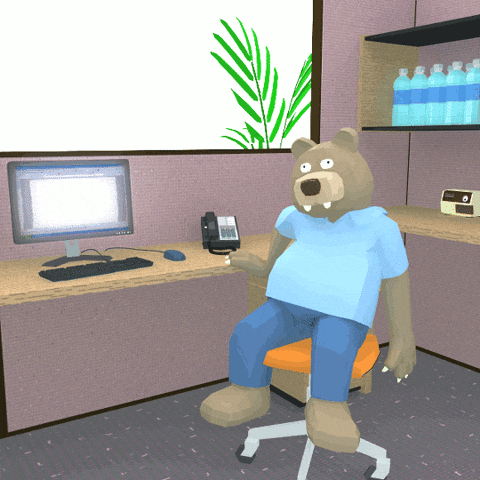
Not only should you use dividers to segment the things for your studio but to provide spaces for everyone on your team, such as having cubicles specifically for animators. Everyone deserves their own private space to work, don't you think?
2. An Ergonomic Chair for Animators
An ergonomic chair is an important investment for any animator. This type of chair is designed to promote good posture, which is essential for animators. Ergonomic chairs are more expensive than regular office chairs, but they're worth it when you think about the well-being of the animators in your studio and how it can help their productivity.
They can be adjusted to fit your body, so you'll be comfortable while working at your desk. If you can create an environment of comfort for animators, productivity will follow.
3. Animation Desks
The importance of a good desk can't be understated. It's the foundation upon which all your animations are built, and a good desk will inspire you to produce better and more efficient animations.
Your animation desk needs to be adjustable in height, sturdy, stable, and have a surface that is easy to clean. And if you're working with traditional animation, it should also offer plenty of storage space for your tools and art materials!
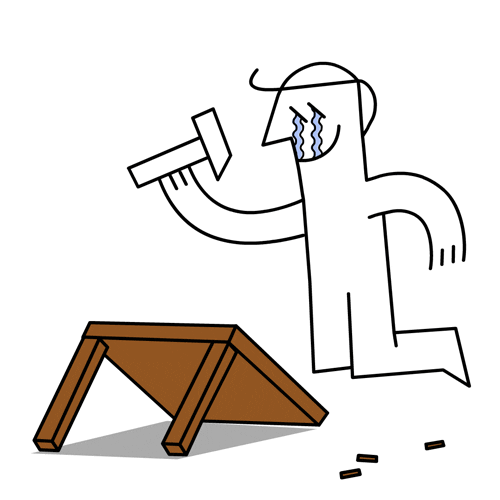
GIF by Buzzfeed Animation via GIPHY
A good place to start looking for an animator's desk is at an art supply store like Blick Art Materials or Dick Blick Art Materials. They sell desks designed specifically for animators that come equipped with everything from drawers large enough for storing pencils & pens (essential!) all the way down through smaller ones for storing erasers or even entire sets of animation paper!
4. Warm Light Sources
Lights are usually left as an afterthought when looking at things for a studio, but you need to see your work. It’s a simple concept, but it’s one that many animators forget about, or don’t think about when setting up their studio.
Remember the old saying “you can't see the forest for the trees?” The same applies here: if you have too much light on your artwork, you won't be able to distinguish between certain shades of color and/or details in drawings. If there is not enough light on your artwork, it won't be easy to discern colors and details. So, how do you ensure that there is enough light in an animation studio?
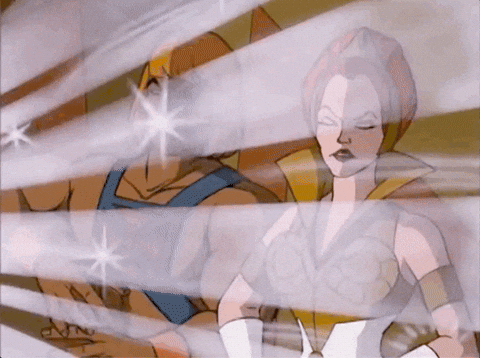
GIF by Masters of the Universe via GIPHY
The first step is creating warm lighting sources—this means natural sunlight coming in through windows or skylights (if possible) or artificial lights like halogen lamps or incandescent bulbs, which provide a warmer glow than fluorescent tubes do.
The second step is making sure those warm lights are placed appropriately relative to where animators sit so that they don't cause eye strain from looking up at them all day long!
The third step is using diffusers and shades to soften the light from your lamps. This will help prevent harsh shadows and glare from appearing on your artwork.
The fourth step is positioning your light sources so they aren't directly in front of the windows or skylights. This will help avoid glare on the glass, which makes it harder for animators to see what's going on outside their studio.
5. Cable Management

Cable management is an important part of the things in a studio you need to pay attention to. But it cannot be easy to keep everything neat and organized when you have a lot of equipment. If you have a lot of cables coming from different sources, it's easy for them all to get tangled up and look messy. This makes it hard for you to find what you need quickly.
6. Power Strips & Extension Cords
Power strips and extension cords are necessary for powering multiple devices. If you're working on a large project, you'll likely need to plug in several computers, tablets, and/or consoles to get the job done. Power strips allow you to plug in multiple devices and things for a studio without having to unplug one device to plug another one in.
This will help prevent equipment failure by keeping all of your devices running smoothly while they're being used simultaneously. It is also recommended that animators purchase surge protectors with many outlets to have room for all their important pieces of equipment without taking up too much space on their desks or tabletop!
7. Backup Power
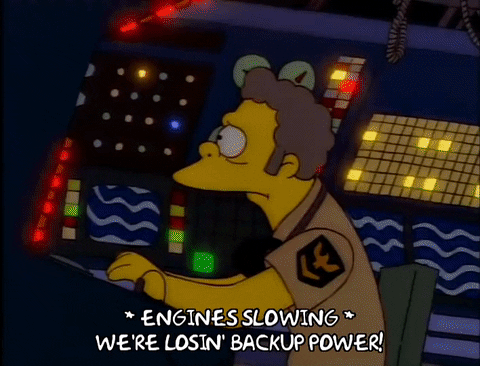
GIF by Simpsonsworld via GIPHY
Backup power is a must-have for any animation studio and is one of the things for a studio everyone forgets. What happens if the power goes out? If your computer is down and you can't work, it could be devastating to your project's schedule and budget.
The most common way to avoid this problem is by having a generator or backup batteries available so that you can still work during an outage. This is especially important if you're working with 3D models or complex scenes, since they require a lot of processing power and data storage space on your computer's hard drive.
There are also some other steps you can take: First, make sure that all of your equipment has surge protectors installed (or just buy new ones). You might also want to look into portable battery backups that connect directly into wall outlets so that there's no need for an electrical outlet nearby—these are especially useful for laptops and other mobile devices like tablets or smartphones because they don't have built-in batteries like desktop computers do!
8. Color Accurate Monitors

GIF via GIPHY
If you're an animator, color-accurate monitors are important for a few reasons. First, they make sure that you are seeing what the client is seeing. It's tough to communicate with clients if your monitor isn't showing them the exact colors that you see in your project file. If the client sees a bright green and it looks like mud on your monitor, then you'll have problems communicating about what needs fixing.
Second, these monitors help ensure that your final product comes out as intended by making sure all of your work matches up with how it looks in real life. For example: If an animation has a blue shirt but when rendered it turns out black because of inaccurate color reproduction on screen, then there will be some confusion when viewing it at home or in theaters later on down the line due to clear visual discrepancies between what was intended versus what actually came out (even if they look great!).
9. Backup Storage (Hard Drives)
Backing up your work regularly is an important task for any animator, but it can be a pain to keep track of. There are some great cloud services out there that will do the job for you, such as Google Drive and Dropbox.
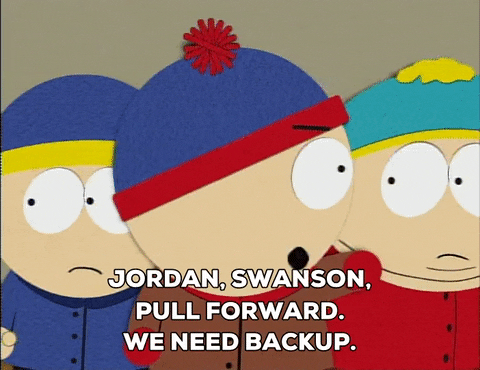
GIF by South Park via GIPHY
However, if you have a lot of data or find yourself needing more space than what's offered by these services, consider getting yourself a NAS (Network Attached Storage device). These devices allow you to store all your projects on one central location that's connected directly into your network.
10. Backup Art Materials (Pens, Cels, Ink, etc.)
A studio is a great place to work, but it's also important to have backup art materials. If you're in the middle of a project and run out of pens or pencils, then this can be disastrous. You'll probably have to go out and buy more—which takes time away from animating!
The same idea applies to paint or other materials like markers and crayons that are not necessarily used exclusively for animation projects but might be necessary depending on what you're working on.

Having these kinds of supplies around means that if your favorite pen runs dry mid-way through drawing something important, you don't have to stop what you're doing and go out in search of another one; instead, all you'll need is just a few seconds before grabbing another one at hand without having made any wasted trips back into town or online shopping expeditions with all their associated fees.
Invest in Things for a Studio that Produce Results

When you are starting out, it can seem like a lot of money to spend on equipment. But as you start to figure out what works for your animation studio, and what doesn't, the price tag will begin to make sense and you'll be looking at the things for a studio that matter the most.
So, what do we conclude from this? Well, if you’re planning on starting or have already started a studio, make sure you’re prepared and invest in things for a studio that matter!
For more tips, as well as answers to any other questions you might have, be sure to follow our blogs, check out our free masterclass and our Animation Business Accelerator Program, download a copy of our free marketing handbook, and check out our blog on “How to Start an Animation Studio”!



